Japan in Milan: the best of Japanese design at Milan Design Week 2024
Discover the best of Japanese design showcasing innovative designs from terrazzo tables to tree-inspired textiles at Milan Design Week and Salone del Mobile 2024

Zelkova wood furniture. Underwater-inspired lighting. Tree-reflecting textiles. Minimalist iron chairs. Japanese taiko drum-like terrazzo tables. Modern expressions of ancient hemp. Vivid abstractions from thousands of wood skewers. Japanese design left its own unique creative imprint on Milan Design Week and Salone del Mobile 2024, with a raft of brands projects across the spectrum – from furniture and art installations to lighting and textiles – in the spotlight across the city.
Furniture was particularly high-profile, with several big name brands unveiling new collections at Salone in addition to a string of Japanese companies staging special exhibitions at sites across the wider city. Here is a round-up of highlights of Japanese brands in the creative spotlight in Milan this year.
Japanese design at Milan Design Week
Karimoku Case
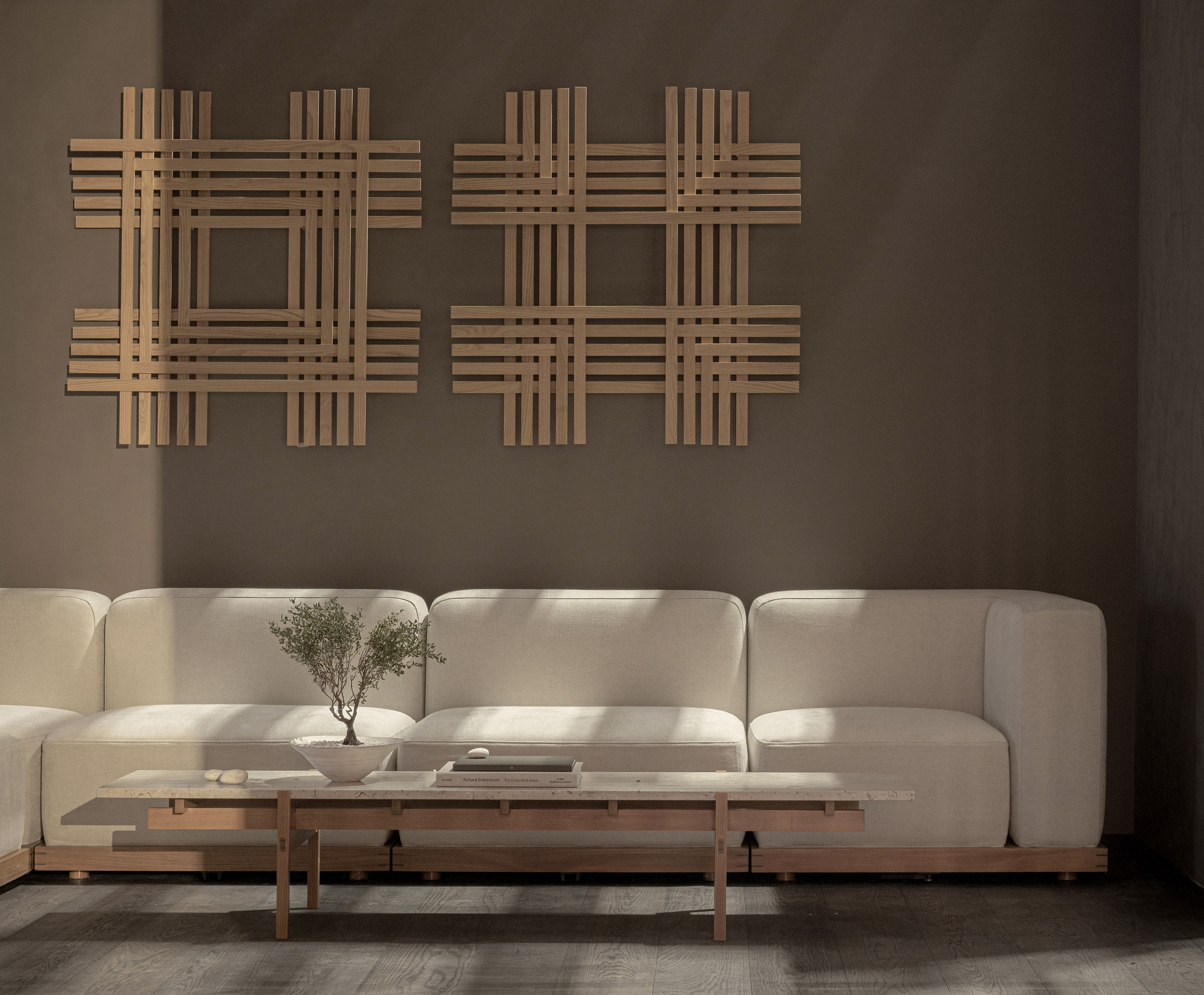
House of Switzerland Milano 2024 Karimoku New Standard × Big Game
The Japanese furniture company long famed for its smooth balance of wood craftsmanship with meticulous manufacturing showcased a spectrum of creative capabilities across Milan this year, with four of its lifestyle brands exhibiting.
Natural contrasts': this is the theme that underpinned the exhibition of Karimoku Case at Salone del Mobile, a brand rooted in a holistic approach to furniture whose story relates to specific project settings. The mood shifted at the threshold of the 160 square metre exhibition, curated by Japanese architect Keiji Ashizawa, a serene haven with an 'engawa' space connecting inside and out, leading into a flow of six spaces with a deep palette of wood-inspired shades (Pure Oak, Smoked Oak and Keyaki Brown) alongside tactile materials such as washi. Here, the latest items designed by Ashizawa and Norm Architects for Case 09 Bellustar Tokyo and Case 10 Azabu Hills Residence were showcased, alongside Norman Foster’s furniture designed for Case 07 Residential Project.
Centre stage was Karimoku's use of keyaki (zelkova) wood as a new key material. Traditionally used in temples and shrines but with declining popularity in recent decades, the company hopes to revive the wood by highlighting its material beauty, as in furniture pieces created for Azabu Hills Case Study 10.
Seyun
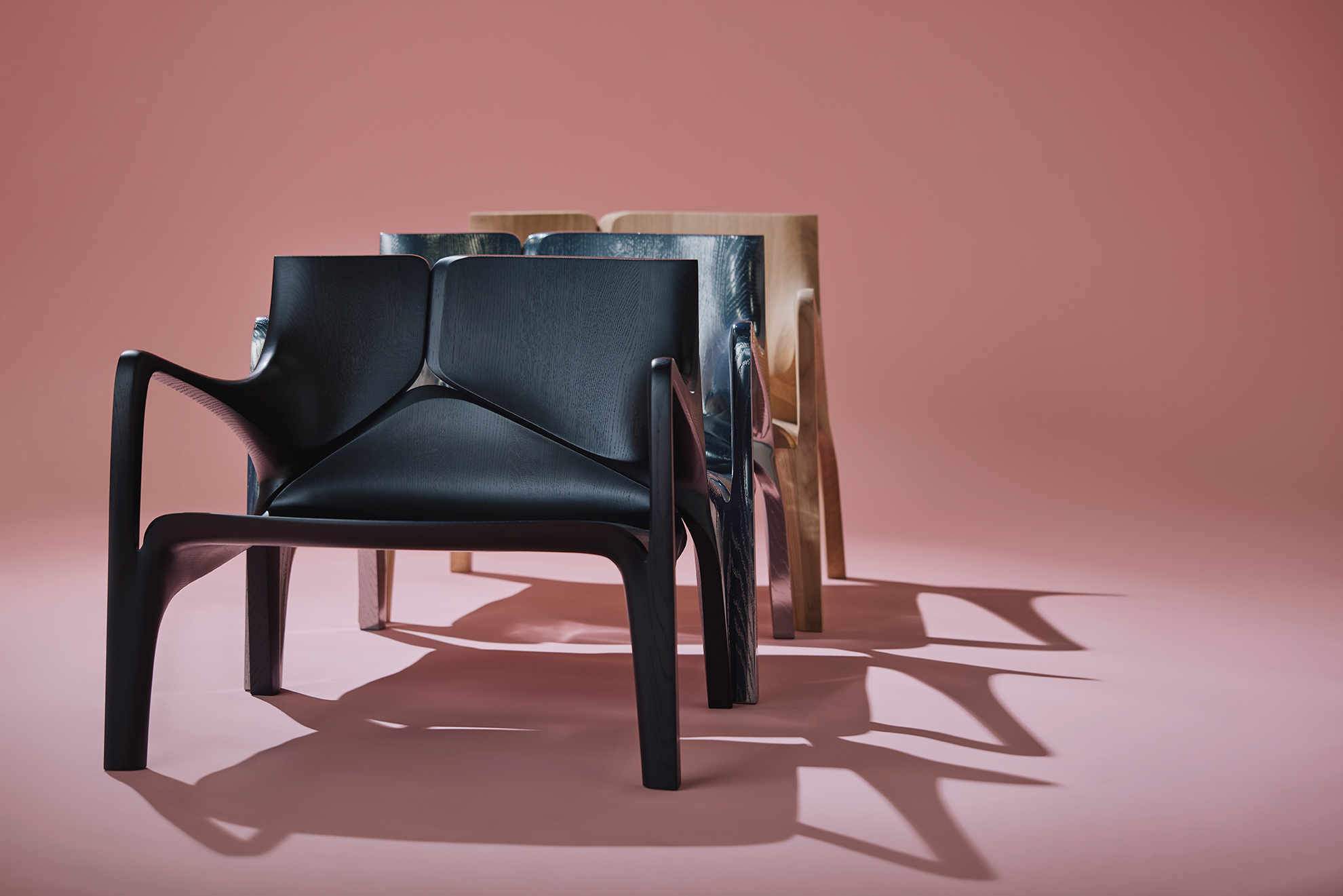
Seyun lounge chair
Meanwhile, a trio of Karimoku brands also showcased their creations in three separate exhibitions in scenic Milanese spaces across Tortona, all within walking distance. Long queues tailed outside Seyun – a brand that fuses the futuristic designs of Zaha Hadid with Karimoku’s wood craftsmanship. The installation unveiled a new Seyun side table, tray and lounge chair – all crafted from just three single pieces of wood, a signature feature of all Seyun creations.
Receive our daily digest of inspiration, escapism and design stories from around the world direct to your inbox.
Mas
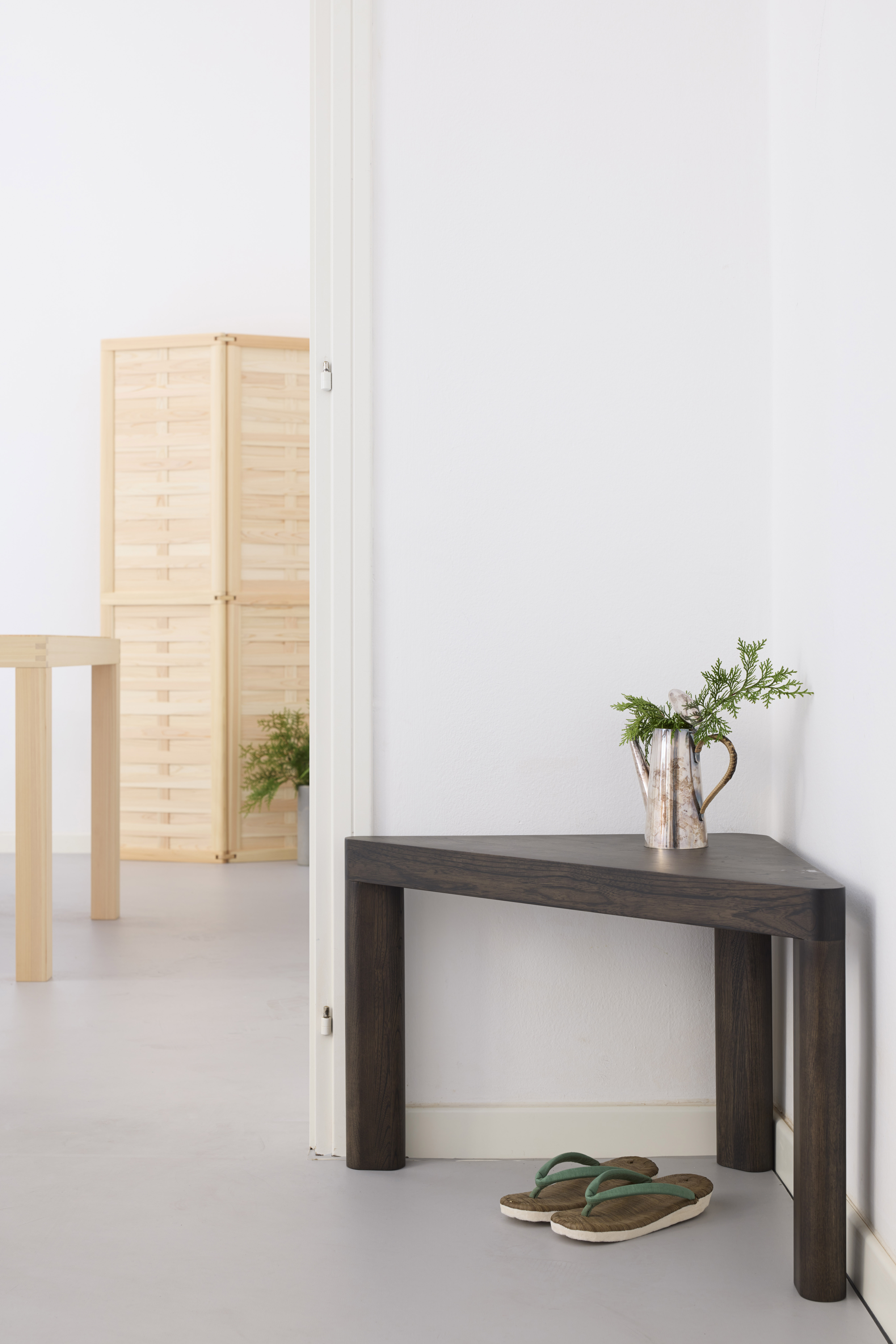
Nearby, Karimoku’s brand Mas – creatively directed by Wataru Kumano – also made its Milan debut, with a calming exhibition called Project Hinoki exploring the beauty of Japanese cypress wood, including a hinoki research installation by Ville Kokkonen, minimal Flos lighting and monochrome calligraphic artwork by Daichiro Shinjo. New products ranged from small temple-like lights, simple, warm and minimal in form, by Daniel Rybakken; to Kokkonen’s low triangular tables.
Karimoku New Standard
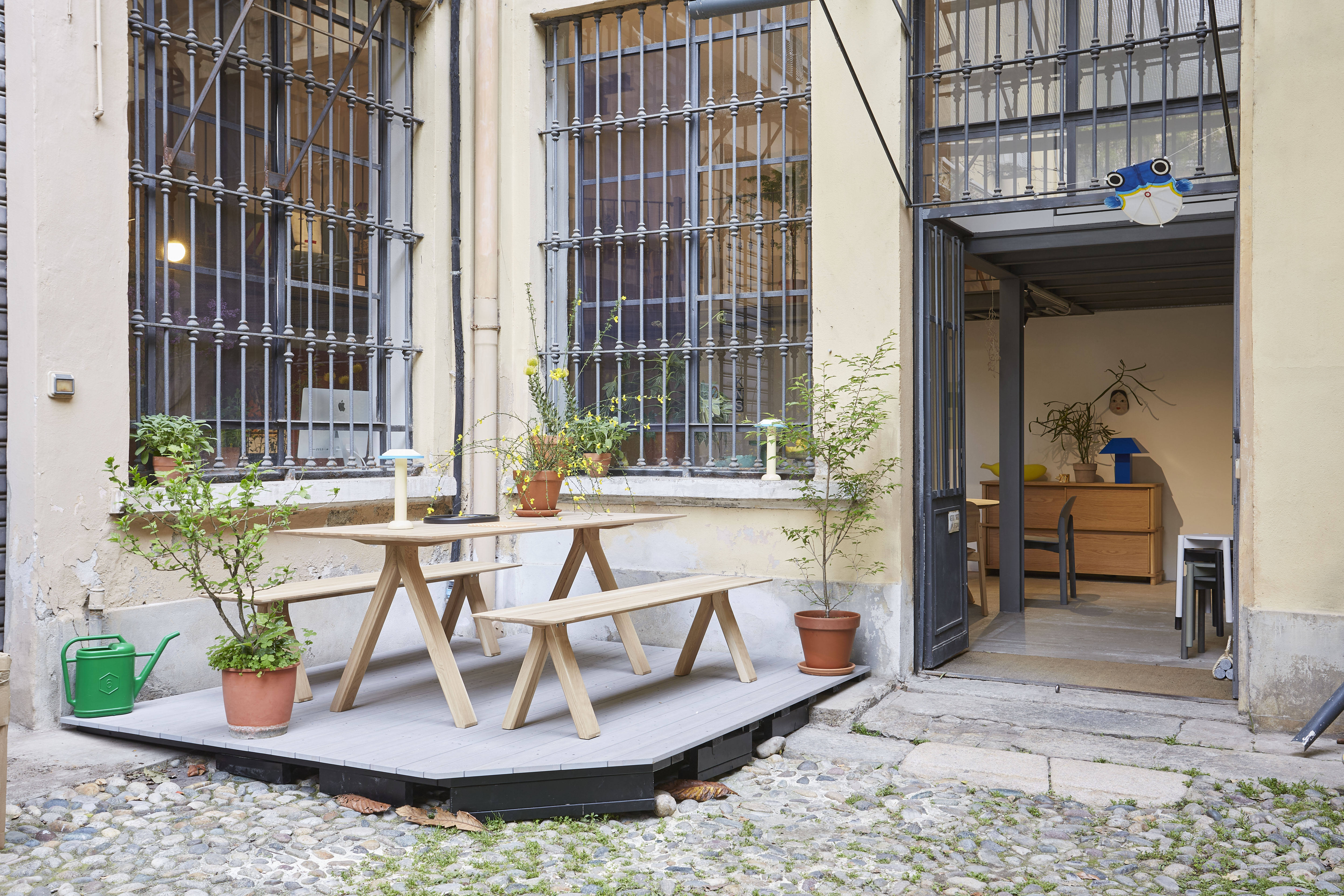
A short walk away, a sun-filled space overlooking a courtyard showcased Karimoku New Standard in residence – casting a spotlight on a brand creatively directed by David Glättli, which fuses progressive creative ideas with the company’s manufacturing technology, with its first solo show in five years, following its 2019 Milan Design Week debut. Here, a spectrum of KNS pieces – including the softly curved minimalism of the Polar sofa by Moritz Schlatter and the Scout Bistro Table Square by Christian Haas plus textiles from a new collaboration with Reiko Sudo’s nuno – were playfully scattered in the atmospheric space, which is normally an artist’s studio, alongside quirky creative touches by Swiss stylist Connie Hüsser from her own collection (from artworks and vases to a ceramic snail on a tabletop).
The Mind Landscape: Hosoo and Michele de Lucchi

The Mind Landscape: Hosoo and Michele de Lucchi
An exploration of the beauty of forests – from both a macro and a micro perpsective – lies at the heart of The Mind Landscape Collection, a layered new collaboration between Hosoo, a centuries-old Kyoto textile maker, and Michele de Lucchi. The new textile collection blurring the boundaries between wood and fabric was showcased in the intimately elegant confines of Hosoo’s Milan showroom in Brera.
Alongside the granular beauty and vivid abstraction of installation images of both close-up and overview shots of trees, centre stage were four new textiles. Inspired by the geometric complexity of trees, the painstakingly detailed motifs were derived from macro photographs of the fibres of wood fibres, layered with colour abstractions drawn from satellite images taken from above. The end result are four textiles – Cedar, Red Elm, Red Oak, Afzelia – which capture the complex beauty of trees, balancing the delicate etchings of organic surfaces with a warmth depth of texture.
Fold and Crease: Issey Miyake
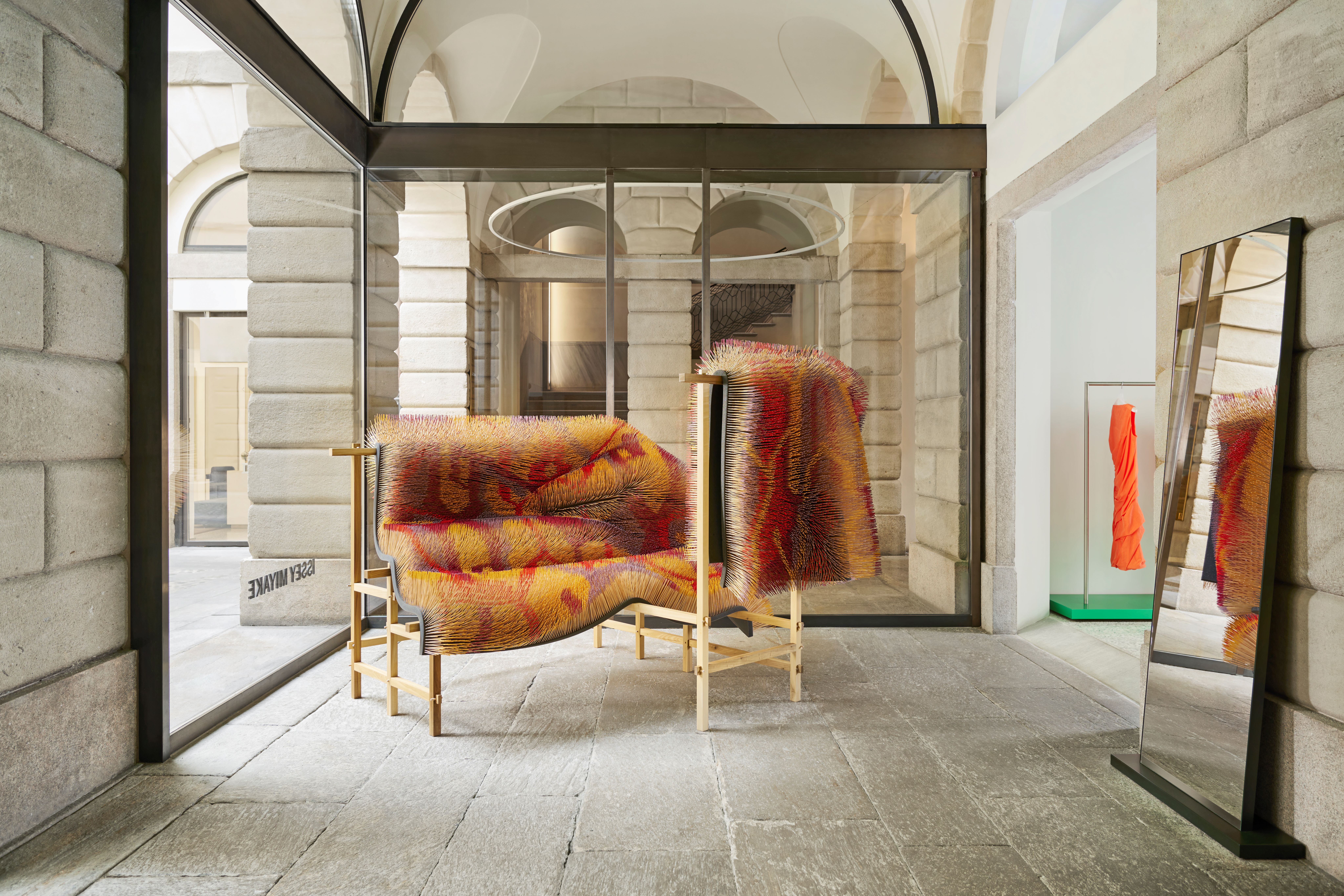
Issey Miyake's Skewers Carpets
It’s not everyday that 60,000 bamboo skewers find their way into the measured minimalism of an Issey Miyake flagship. Yet these wooden sticks, every single tip painstakingly hand-dyed in a rainbow spectrum of paint shades, take centre stage in Fold and Crease, an installation brought to life by Dutch collective We Make Carpets. Inspired by the making and design of Issey Miyake creations, a bed of foam is contained in a crafted tulip wood frame – drawing on traditional Japanese joinery – from which emerges a flowing undulation of tens of thousands of thin wooden sticks, more typically used as food skewers.
The effect is a warm and visually rich abstraction that brings to mind the organic motion of an underwater bed of coral. A scattering of five small individual artworks using metal pins are also placed throughout the Tokujin-designed store, a space that balances a clean modern lightness with the layered texture and original features of the historic building. As We Make Carpets, who typically give 'new life' to everyday objects, explain: 'We were struck by the quality of Issey Miyake’s clothing and textiles. It is clear to use that the design team focuses on the details in every regard. We immediately felt that this attention to detail is something we have in common.'
isseymiyake.comwemakecarpets.nl
The Beauty of Lines : Sugiyama
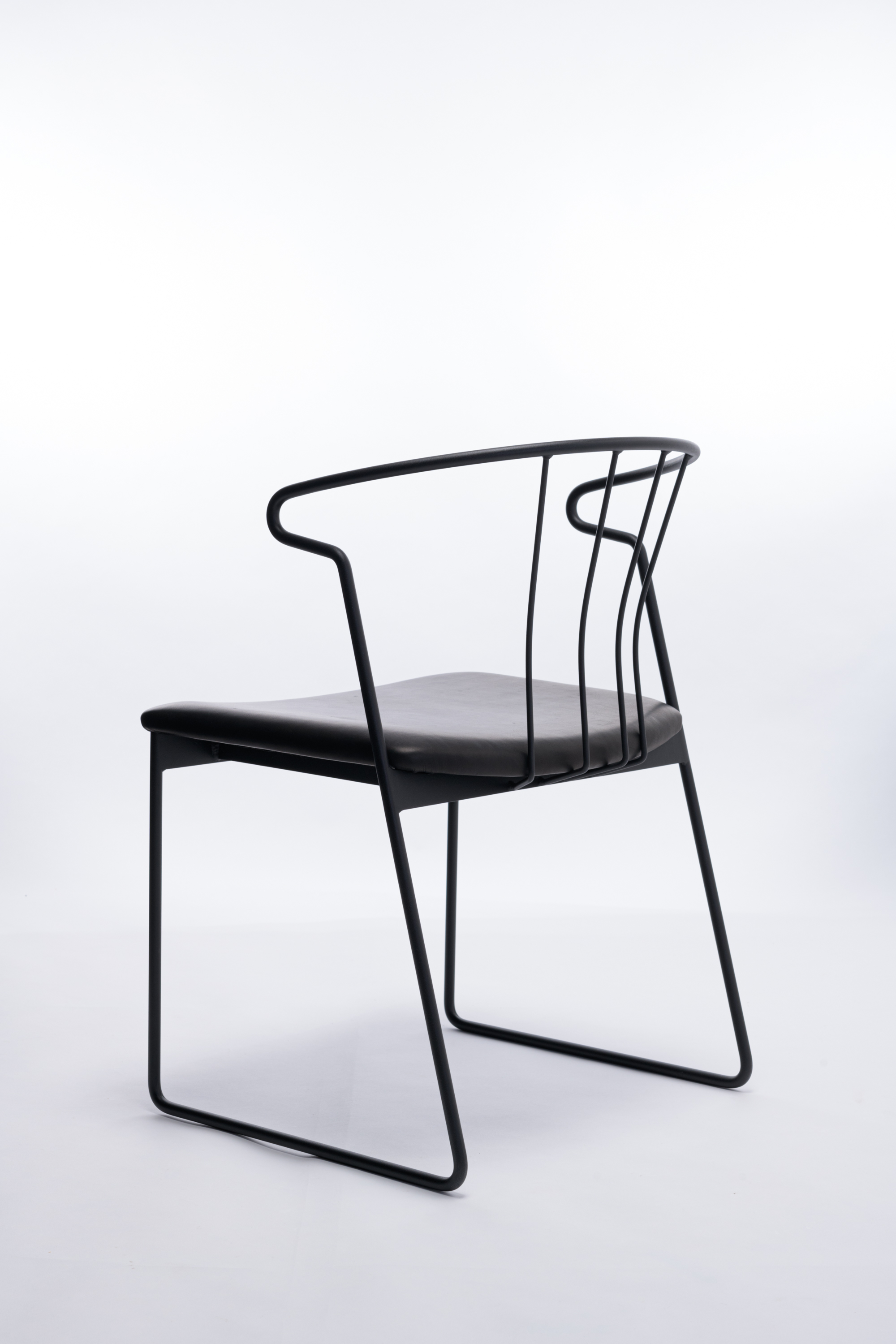
Sugiyama Furniture's Felice Chair
'The starting point is always a piece of iron,' says Ayumi Shimada, the CEO of Sugiyama Furniture, a family-run company based in Seki city in crafts-rich Gifu Prefeture in Japan that specialises in solid iron furniture craftsmanship. Their exhibition 'The Beauty of Lines – Sugiyama, Japanese Minimalist Solid Iron Furniture' showcased the creative versatility of this elemental material with a series of new interior products created in collaboration with Japanese creatives at intimate Galleria Antonia Battaglia, overlooking a peaceful inner courtyard.
Works ranged from the Felice chairs, balancing a clean-flowing lightweight iron silhouette with the organic warmth of leather details and meticulous craftsmanship, by designer Kazuteru Murasawa; to the intimate geometry of a Wall Deco series, hanging iron wall panels designed by Fumie Shibata.
Ambientec
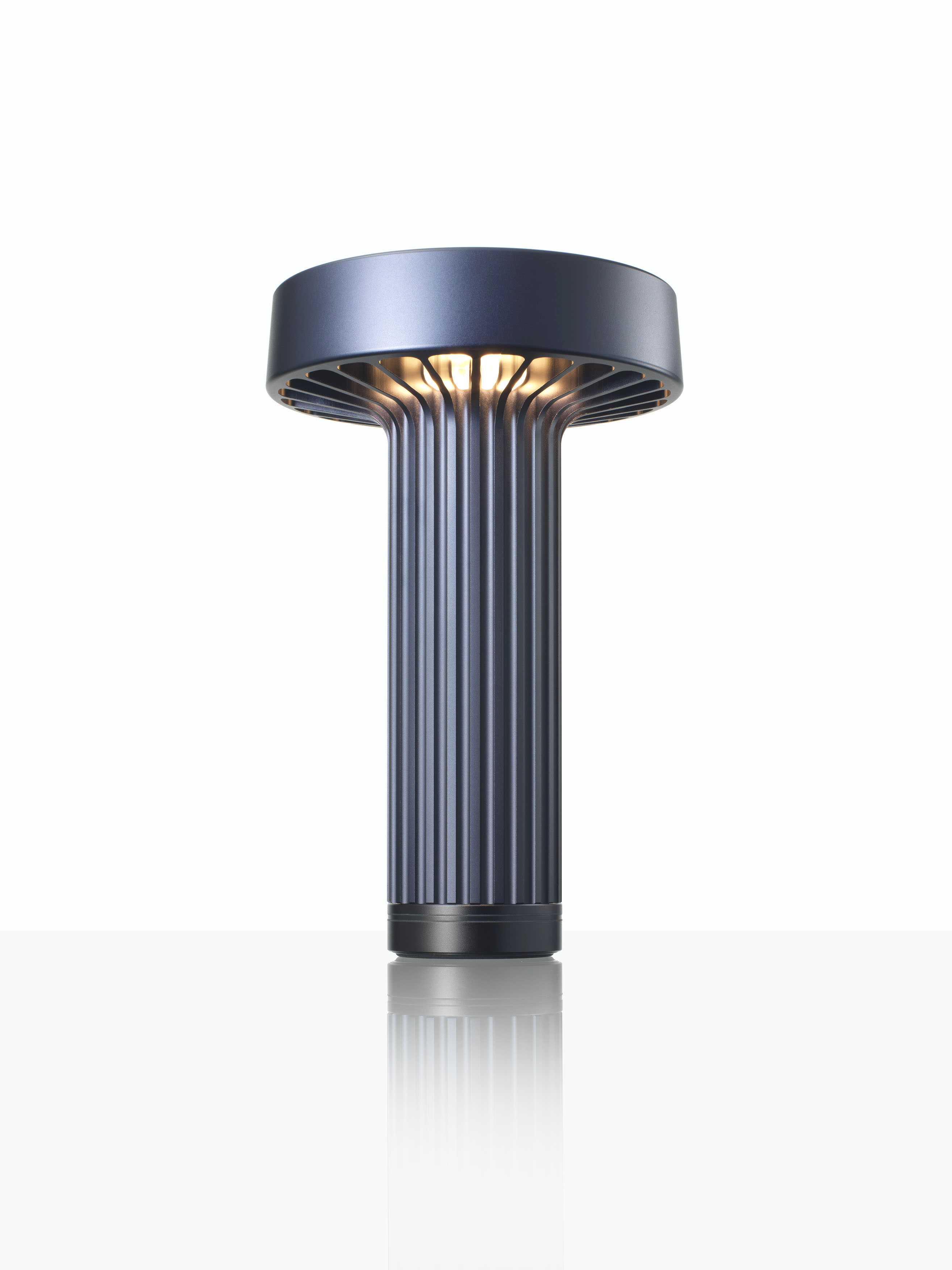
Fotika portable light
Fotica. This word – referring to the light that filters through ocean waters to its lower levels – is the starting point of a new light unveiled by Japanese lighting brand Ambientec during Milan Design Week. Designed by Kensaku Oshiro, it is the brand’s first hybrid portable lamp – balancing both as an ambient light and a desk light, harmonised in a sleek aluminium form that resembles a clean-lined contemporary flower diffusing rays of light.
'When I think about making portable lamps there are often lots of different pieces, but I wanted to make this as simple and efficiently as possible, so it is one piece of aluminium,' explains Oshiro. It was one of a string of products showcased by Ambientec during the week, with a key focus being Scent of Light at Fueguia 1933’s aromatic showroom at Galleria Vittoria Emanuele II, layering lighting with the sensual scents of the luxury perfume company.
Majotae 9490

Majotae 9490
9490. This is the average number of hours a human sleeps in a lifetime – a figure that forms the basis for a new line of bedding designed by Teruhiro Yanagihara Studio (TYS) for majotae, a Japanese hemp brand which aims to revitalise the use of traditional hemp textiles in daily life. Majotae 9490 is its first product line, consisting of bedding (made from tamai-fu, a super-fine centuries-old hemp rarely used today. The new bedding textiles – displayed in flowing folds and drapes at Secci Milano, in a deep, bright modern palette obtained through natural dyeing processes – balance heritage with technology, the textile’s softness deepening with the passing of time.
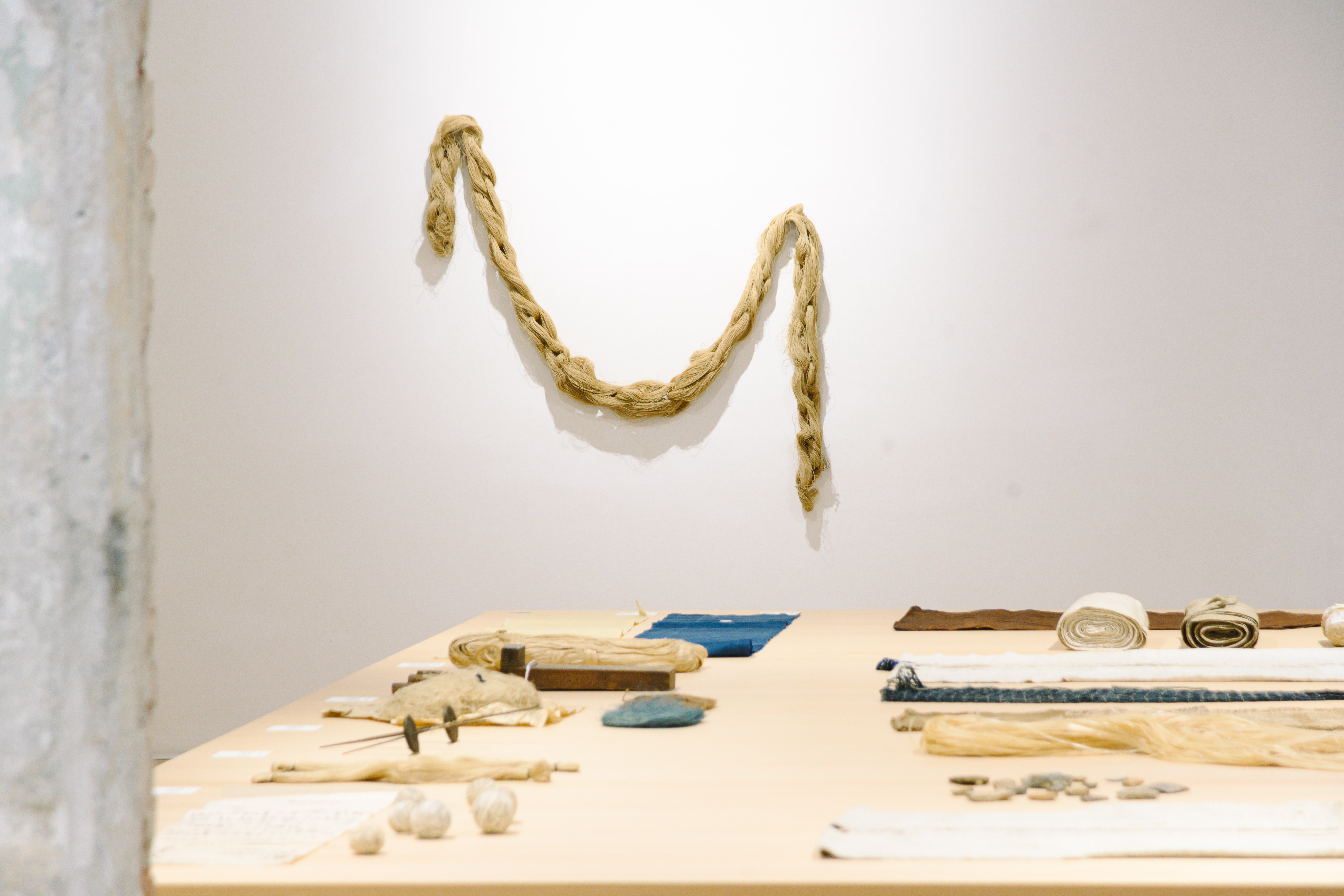
The exhibition at Secci Milano also displayed pieces from Majotae’s expansive 1,500-strong hemp artefact collection (from yarn wheels to fishing nets); while an atmospheric presentation nearby at Berta, an 8th century former residence in 5VIE, revealed a master artisan demonstrating traditional weaving methods using majotae yarn on an antique Japanese loom known as a tenbin koshi bata.
Secci Milano was also home to a separate exhibition, creatively directed by TYS, that showcased Abel Black, a new type of stainless steel that is unusually black as a base material, rather than black at surface level through painting or plating) – with the minimal abstract curves of a sculpture created by Dutch artist Fleur van Dodewaard reflecting the beauty of the new material.
The Canvas and the Plinth: Stellar Works
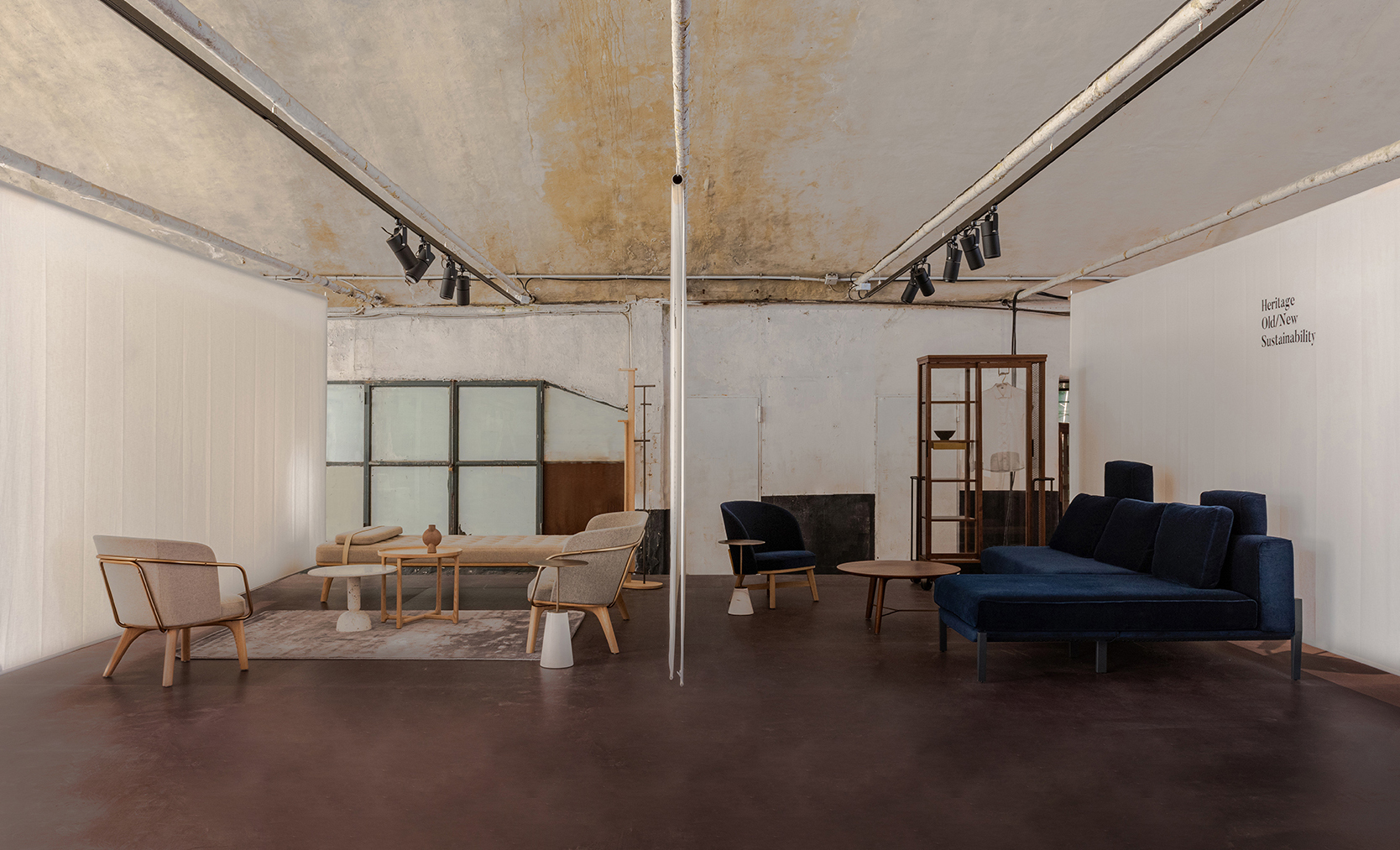
Stellar Works exhibition space
The Japanese furniture brand, based in Shanghai, returned to Milan for the first time since the pandemic, with a sweeping showcase of interior products in a series of spaces designed by its creative directors Neri & Hu. The installation – housed beneath the high curved concrete roof of The Garage, an atmospheric industrial space Viale Gorizia – was inspired by Marco Zanuso. A series of suspended canvases and a plywood platform – paying tribute to Zanuso’s 1946 collaboration with the painter Gianni Dova – created a journey through a string of scenographies showcasing products, old and new.
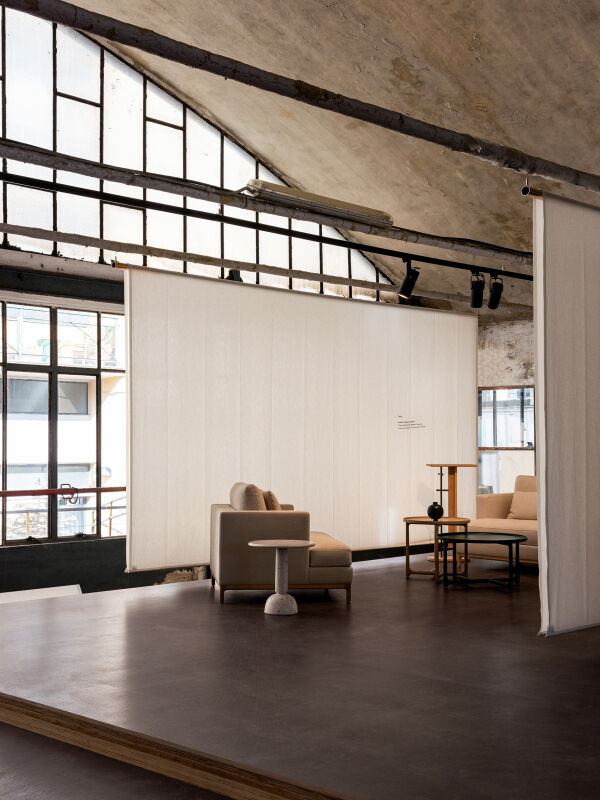
Making their debut were four new Neri&Hu products, including the serenely-lined Qi collection sofas and ottomans alongside the measured geometry of The Inter wood coat rack and console. Another new addition was Taiko, a round geometric terrazzo table inspired by Japanese taiko drums, designed by Studio Stefan Sholten, with other products in the spotlight including Michele de Lucchi’s Stay and Float collection – a sculptural hand-finished dining table and chairs, showcased at a design event for the first time.
Nagano Interior
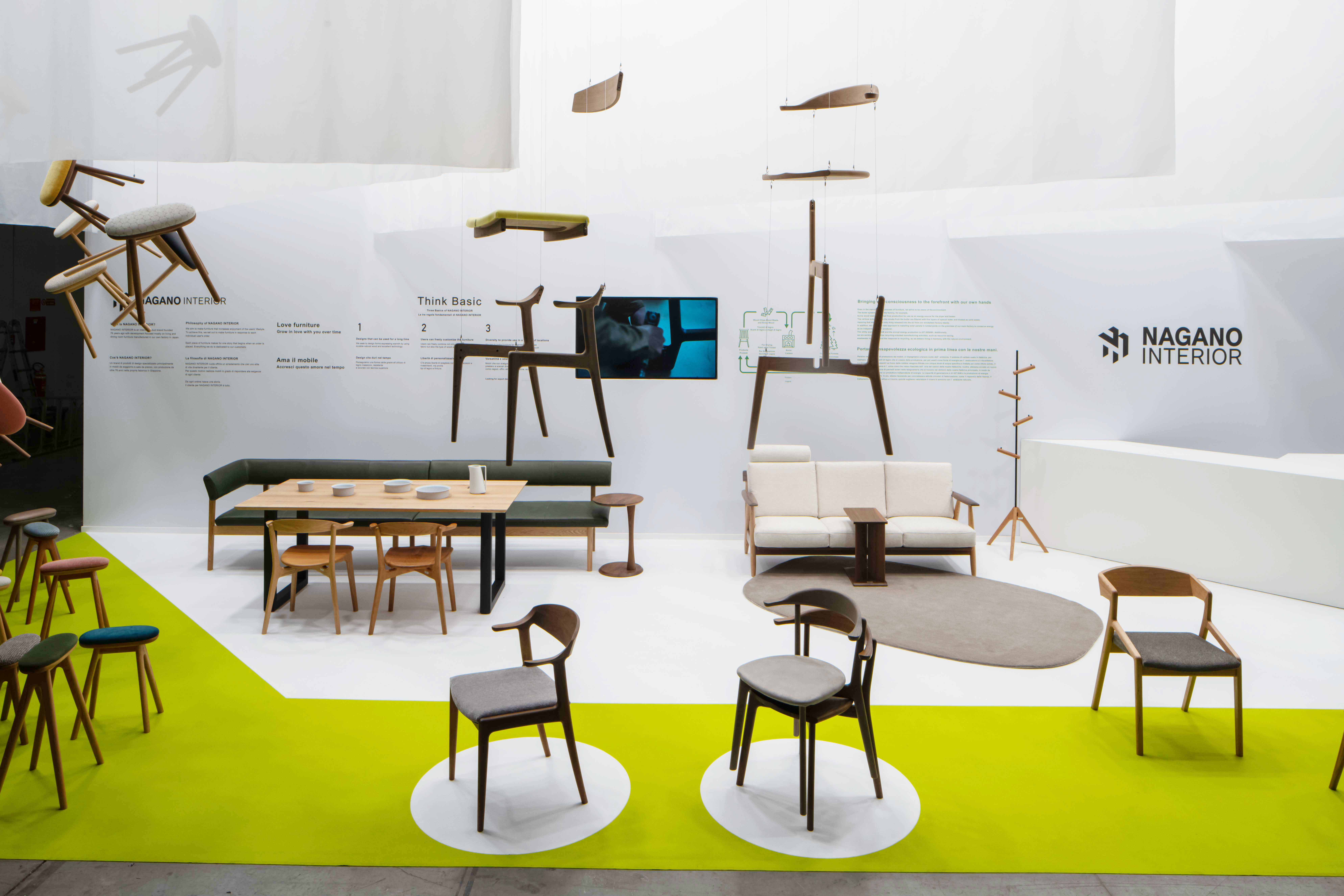
Nagano Interiors in Pavilion 1
Red oak. Japanese ash. Chestnut. Black cherry. These are among a cornucopia of solid wood material that form the foundation of furniture crafted by Nagano Interiors, a Japanese brand which debuted at Salone del Mobile for the first time this year. The company, which was founded in 1946 in Asakura in southern Japan’s Fukuoka region, is inspired by the idea of 'wa' or harmony – with quality material balanced with painstaking wood craftsmamship and manufacturing precision.
In Milan, Nagano Interiors showcased a string of signature products, which included a series of stools seemingly floating from the ceiling. Highlights included the DT614 table, with a solid wooden top and contemporary steel base: and the sweeping backrest and sculptural form of the Corona chair.
Ritzwell
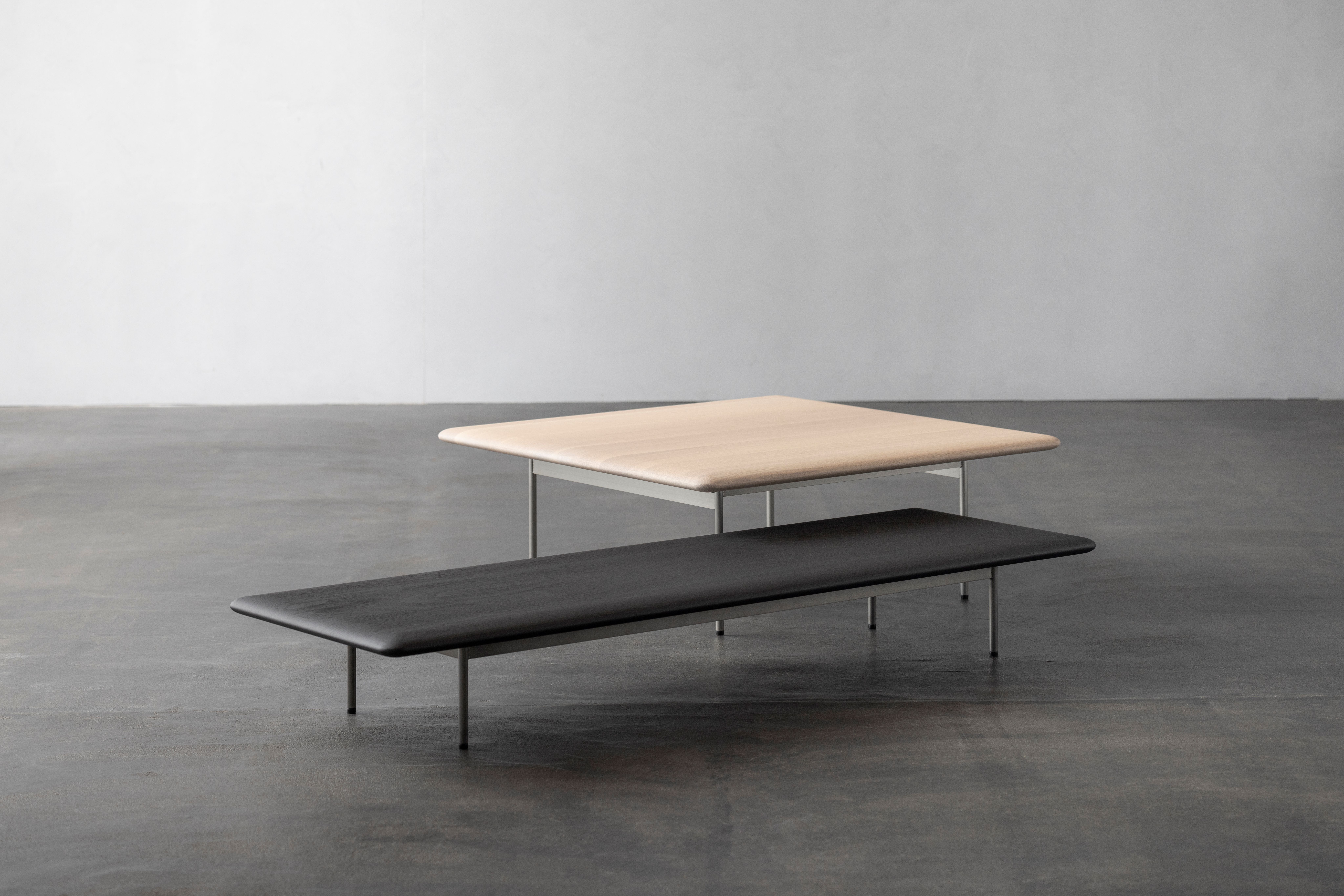
MT Coffee Table
A blend of Japanese craftsmanship and design – fused with a focus on function and comfort – underpin collections unveiled at Salone del Mobile by Ritzwell, the Fukuoka-based Japanese furniture maker. Centre stage, in a minimal contemporary space with natural tones and abstract plants designed by studio 967 arch – complete with live artisan demonstrations – was the new Constantino Armchair by Shinsaku Miyamoto, crafted in sold oak or walnut, with softly tapering legs and curved armrests with leather finishes (the underside handstitching providing a tactile touch).
Other new pieces included the MT Coffee Table, with its rectangular, softly curved surface and steel legs. The palette also deepened with the launch of two new shades of wood colours – Sohboku, a deep black-blue with the surface grains still visible; and Gen, a warm shade of brown and subtle colour gradations.
Danielle Demetriou is a British writer and editor who moved from London to Japan in 2007. She writes about design, architecture and culture (for newspapers, magazines and books) and lives in an old machiya townhouse in Kyoto.
Instagram - @danielleinjapan
-
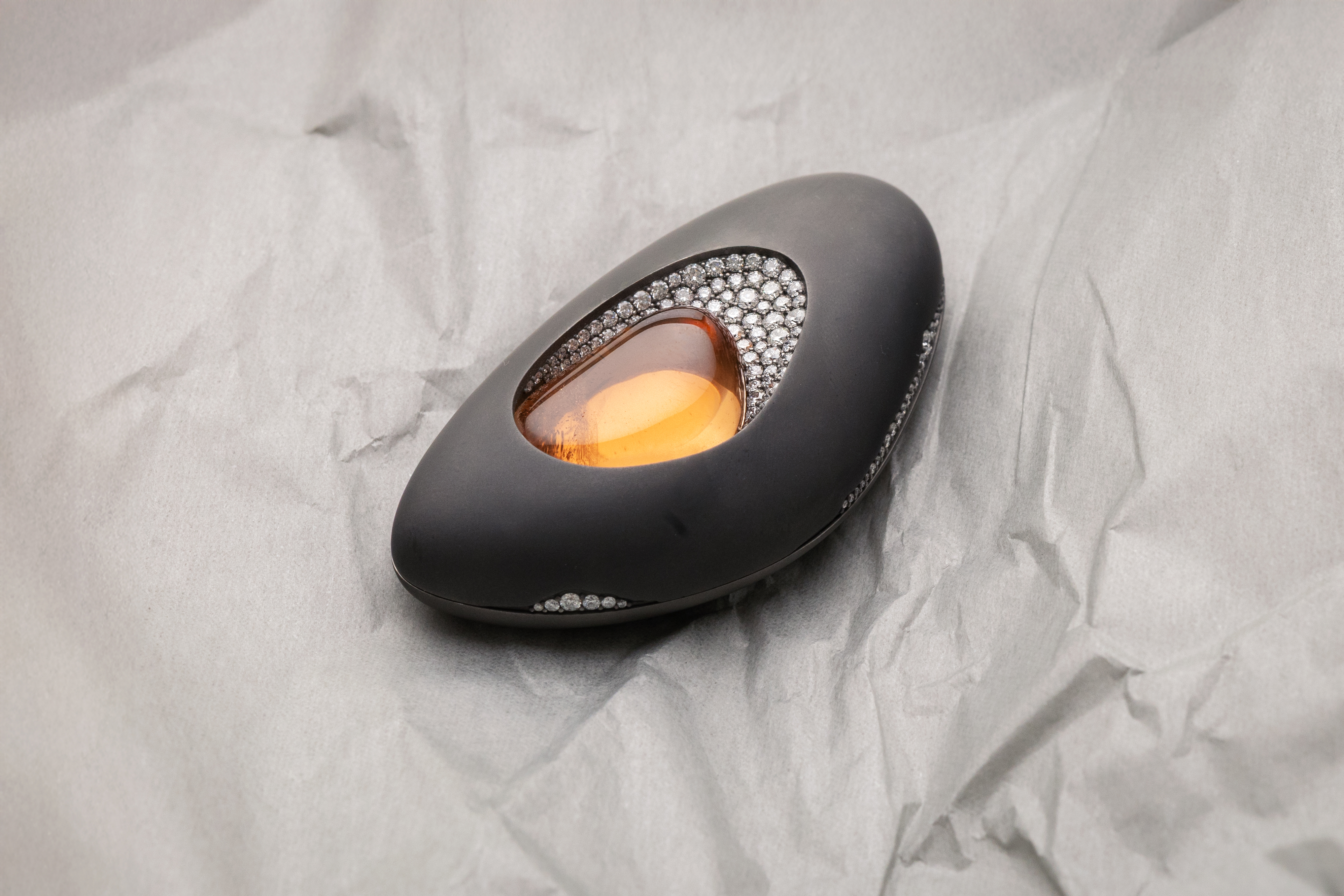 Discover the cool and offbeat designs of jeweller Inesa Kovalova
Discover the cool and offbeat designs of jeweller Inesa KovalovaInesa Kovalova's jewellery celebrates a mix of mediums and materials
-
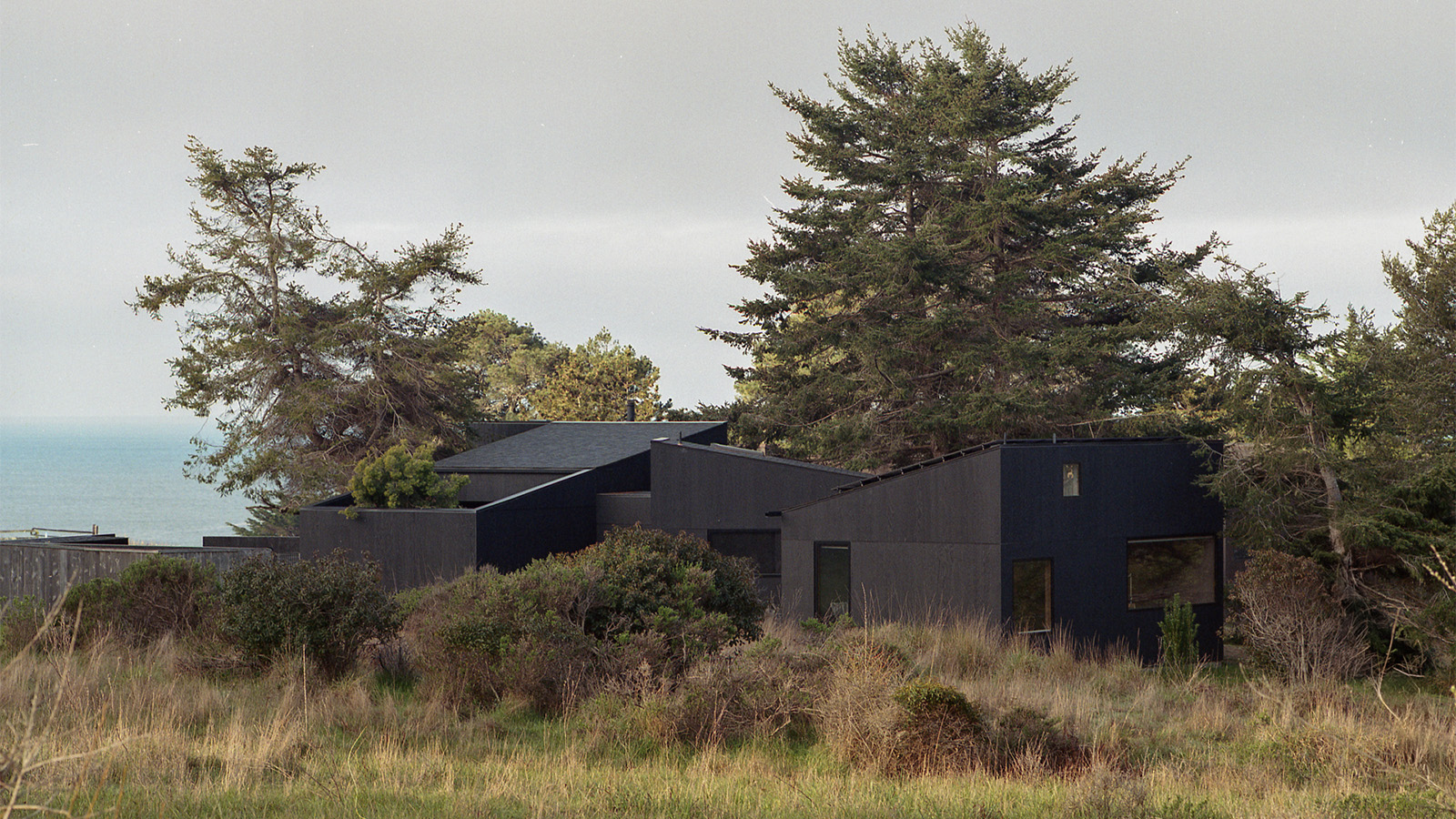 A group of friends built this California coastal home, rooted in nature and modern design
A group of friends built this California coastal home, rooted in nature and modern designNestled in the Sea Ranch community, a new coastal home, The House of Four Ecologies, is designed to be shared between friends, with each room offering expansive, intricate vistas
-
 Men’s Fashion Week A/W 2026 is almost here. Here’s what to expect
Men’s Fashion Week A/W 2026 is almost here. Here’s what to expectFrom this season’s roster of Pitti Uomo guest designers to Jonathan Anderson’s sophomore men’s collection at Dior – as well as Véronique Nichanian’s Hermès swansong – everything to look out for at Men’s Fashion Week A/W 2026
-
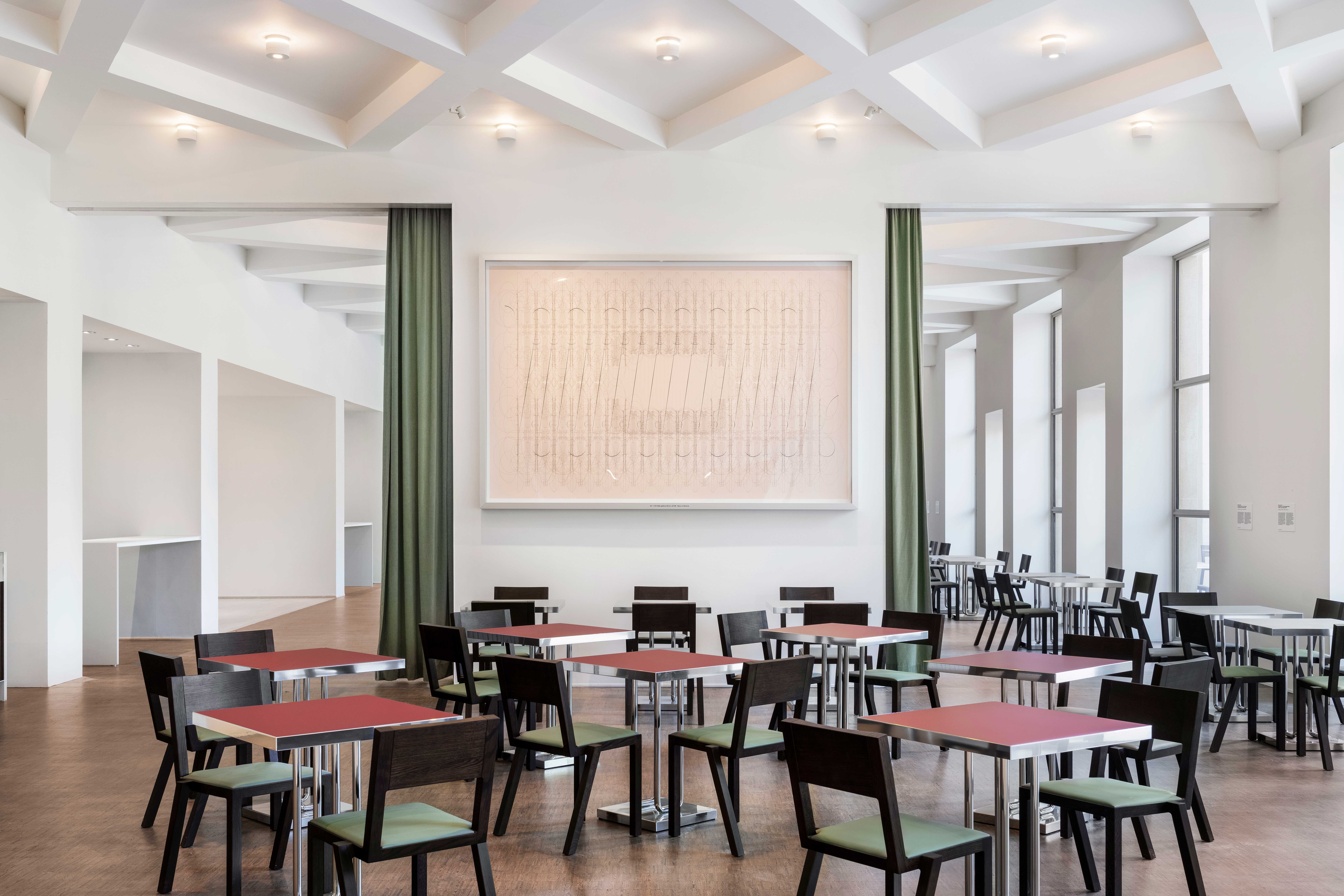 Dine within a rationalist design gem at the newly opened Cucina Triennale
Dine within a rationalist design gem at the newly opened Cucina TriennaleCucina Triennale is the latest space to open at Triennale Milano, a restaurant and a café by Luca Cipelletti and Unifor, inspired by the building's 1930s design
-
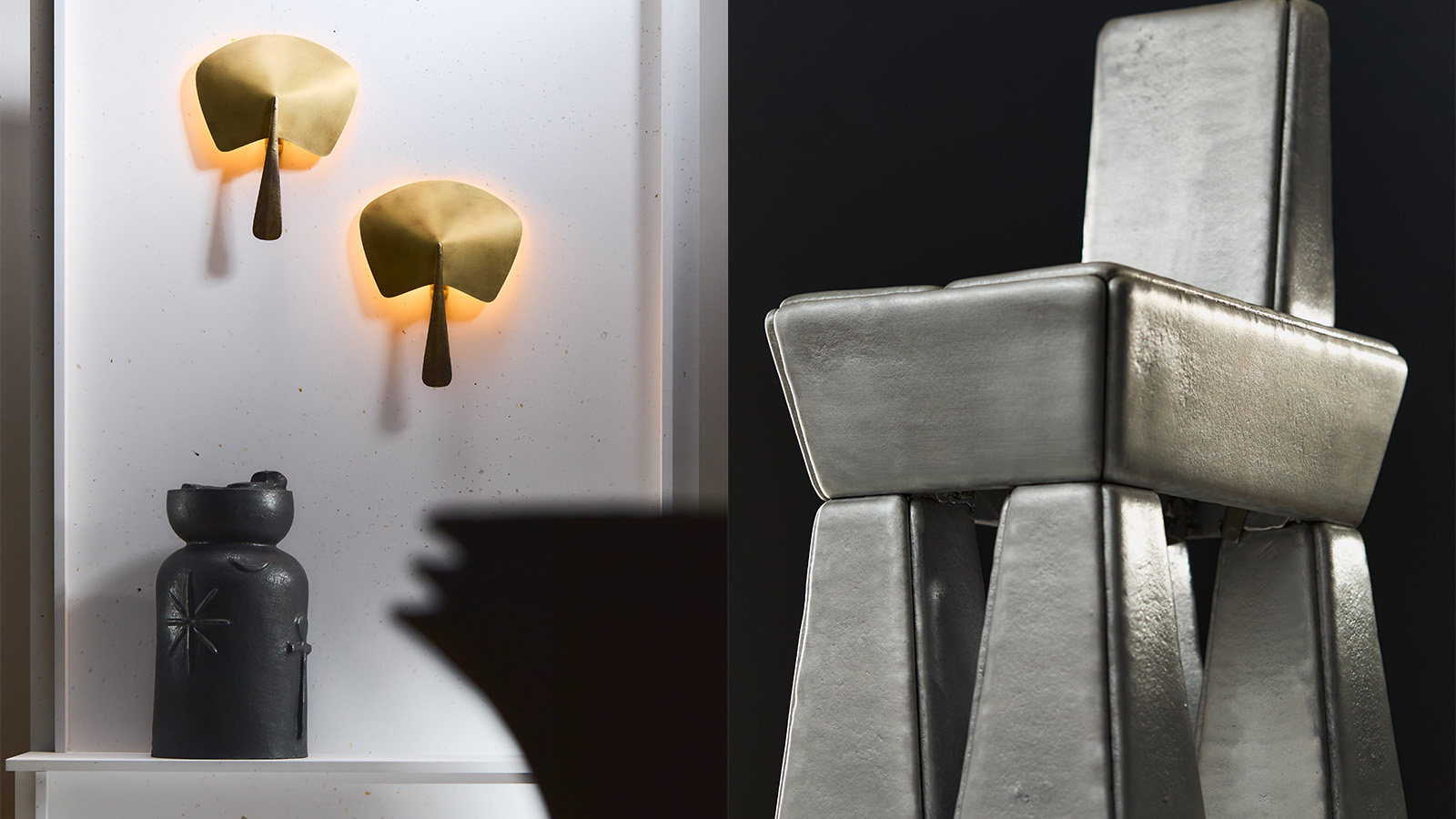 20 emerging designers shine in our ‘Material Alchemists’ film
20 emerging designers shine in our ‘Material Alchemists’ filmWallpaper’s ‘Material Alchemists’ exhibition during Milan Design Week 2025 spotlighted 20 emerging designers with a passion for transforming matter – see it now in our short film
-
 Delve into the Wallpaper* Design Directory 2025, on sale now
Delve into the Wallpaper* Design Directory 2025, on sale nowIn the July issue of Wallpaper*, find a photographic love letter to Milan Design Week, plus the best new furniture, lighting, kitchens, bathrooms and more
-
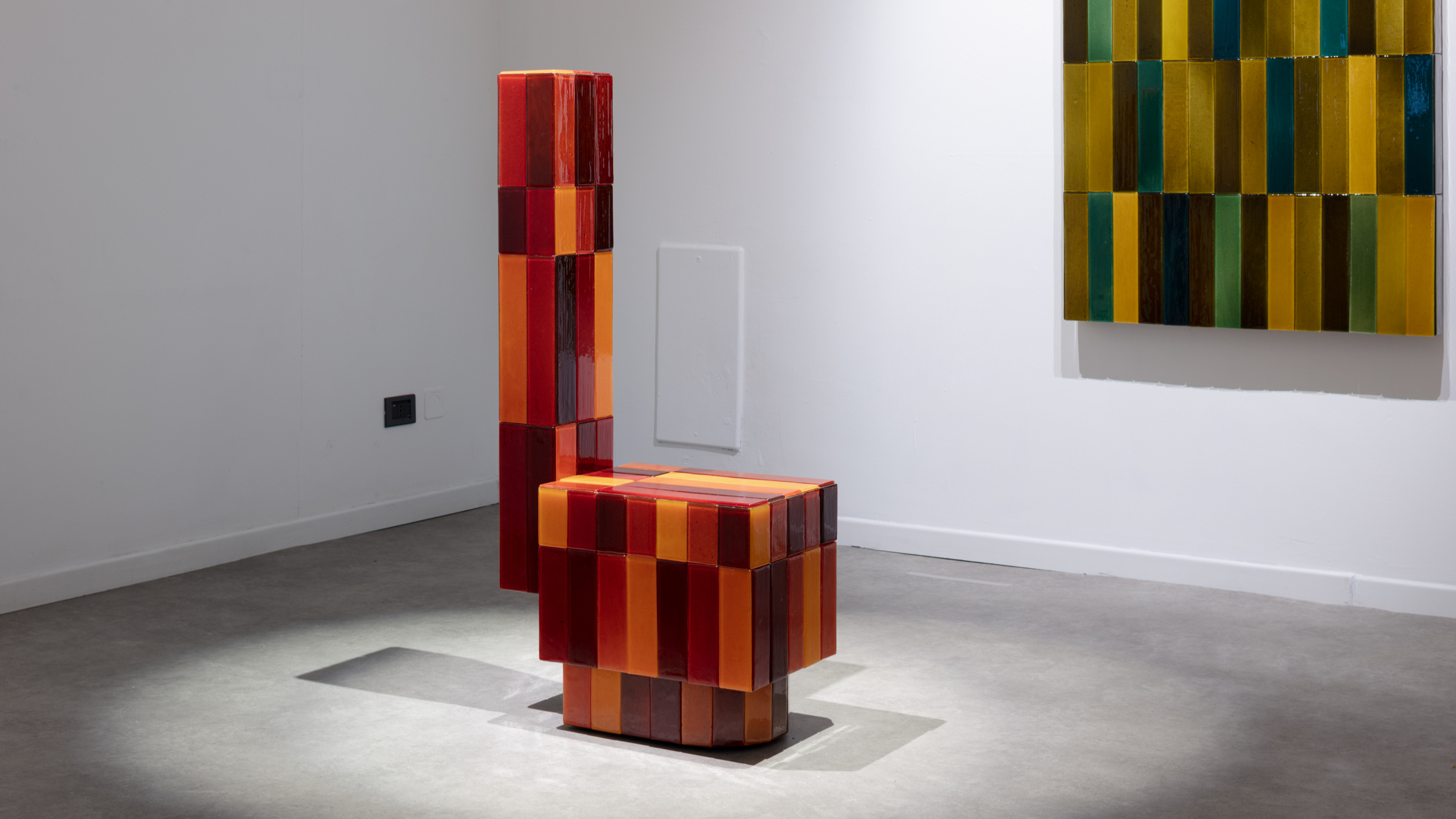 Tokyo design studio We+ transforms microalgae into colours
Tokyo design studio We+ transforms microalgae into coloursCould microalgae be the sustainable pigment of the future? A Japanese research project investigates
-
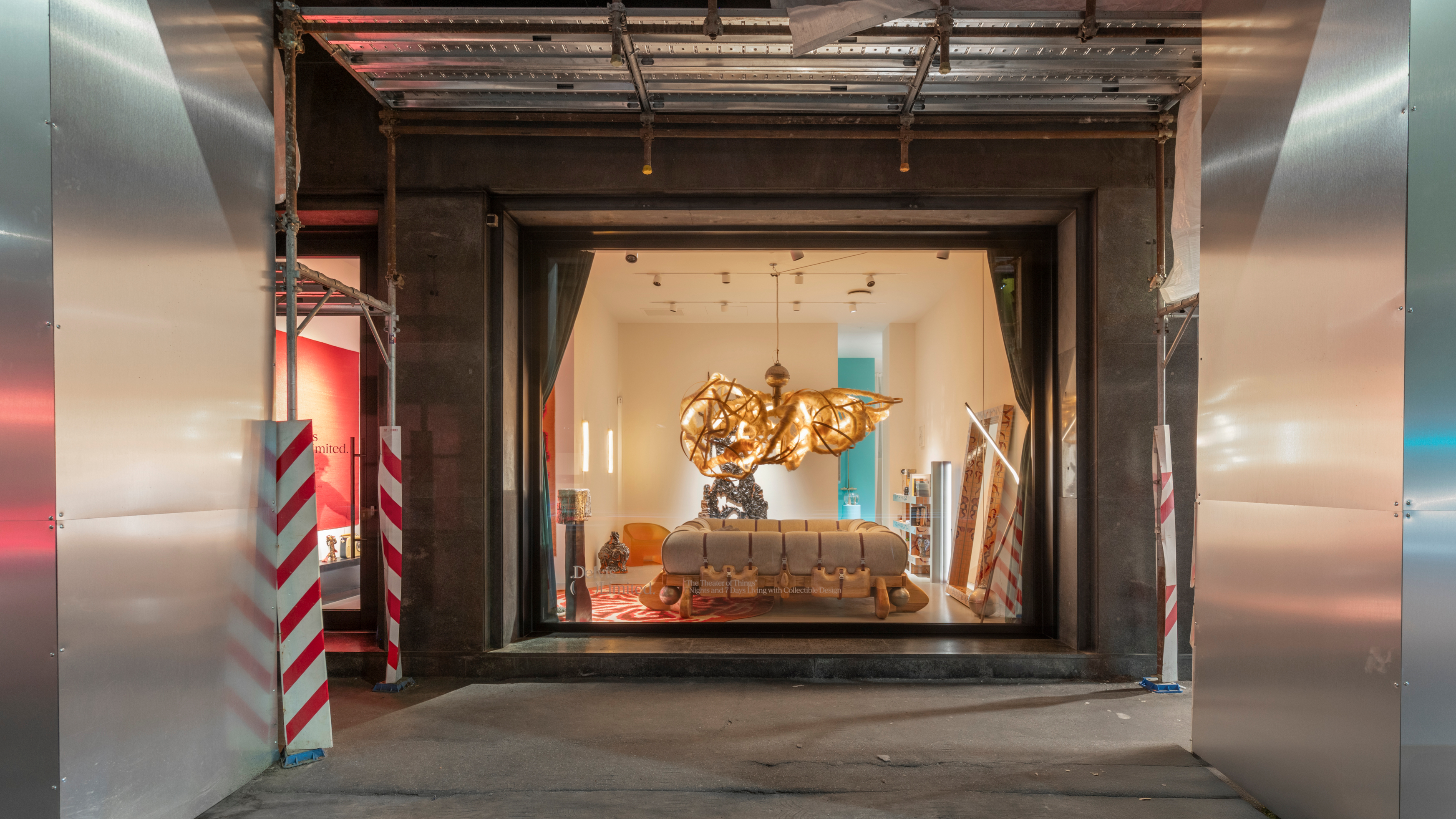 Delvis (Un)Limited turns a Brera shopfront into a live-in design installation
Delvis (Un)Limited turns a Brera shopfront into a live-in design installationWhat happens when collectible design becomes part of a live performance? The Theatre of Things, curated by Joseph Grima and Valentina Ciuffi, invited designers to live with their work – and let the public look in
-
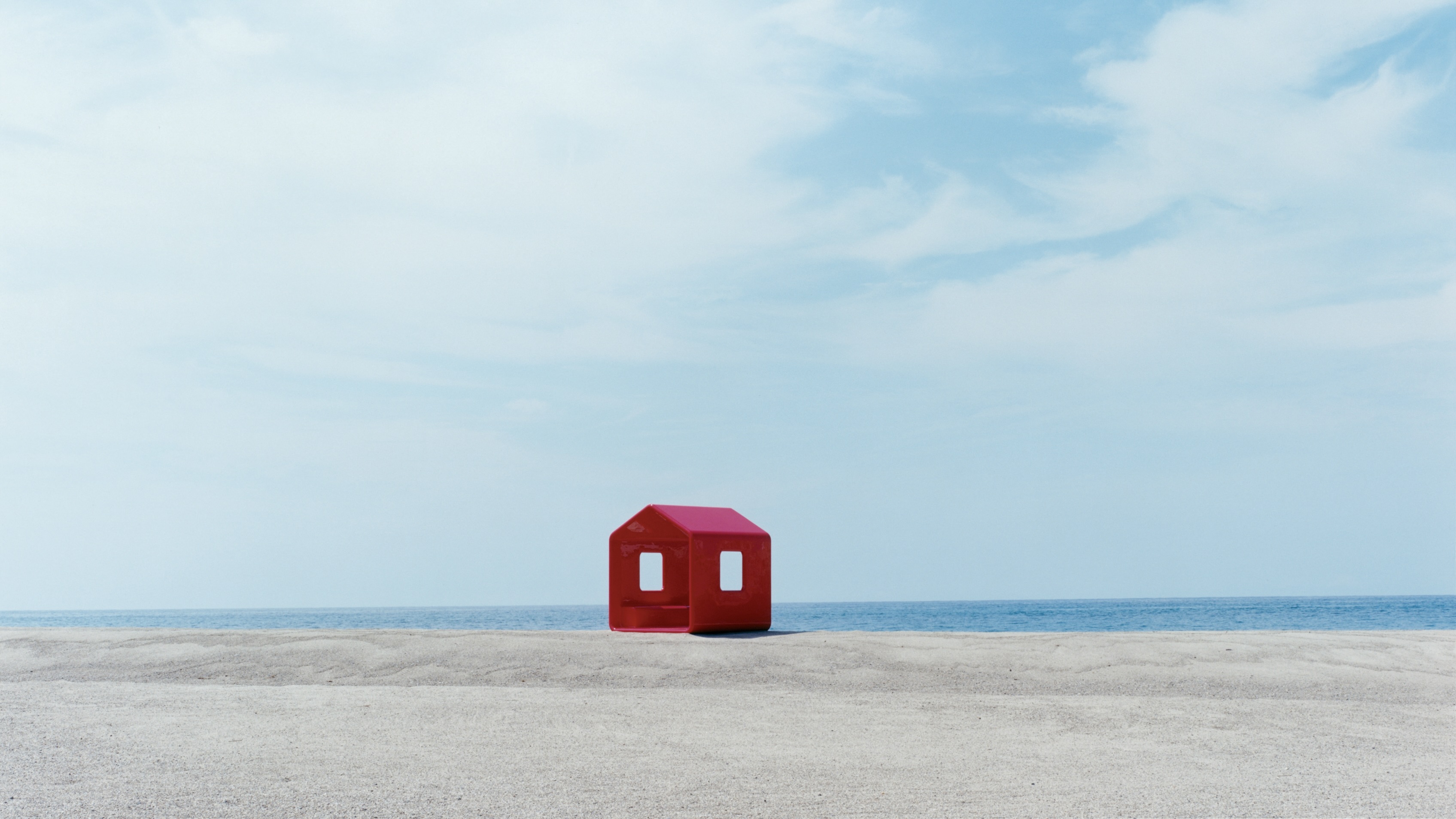 Naoto Fukasawa sparks children’s imaginations with play sculptures
Naoto Fukasawa sparks children’s imaginations with play sculpturesThe Japanese designer creates an intuitive series of bold play sculptures, designed to spark children’s desire to play without thinking
-
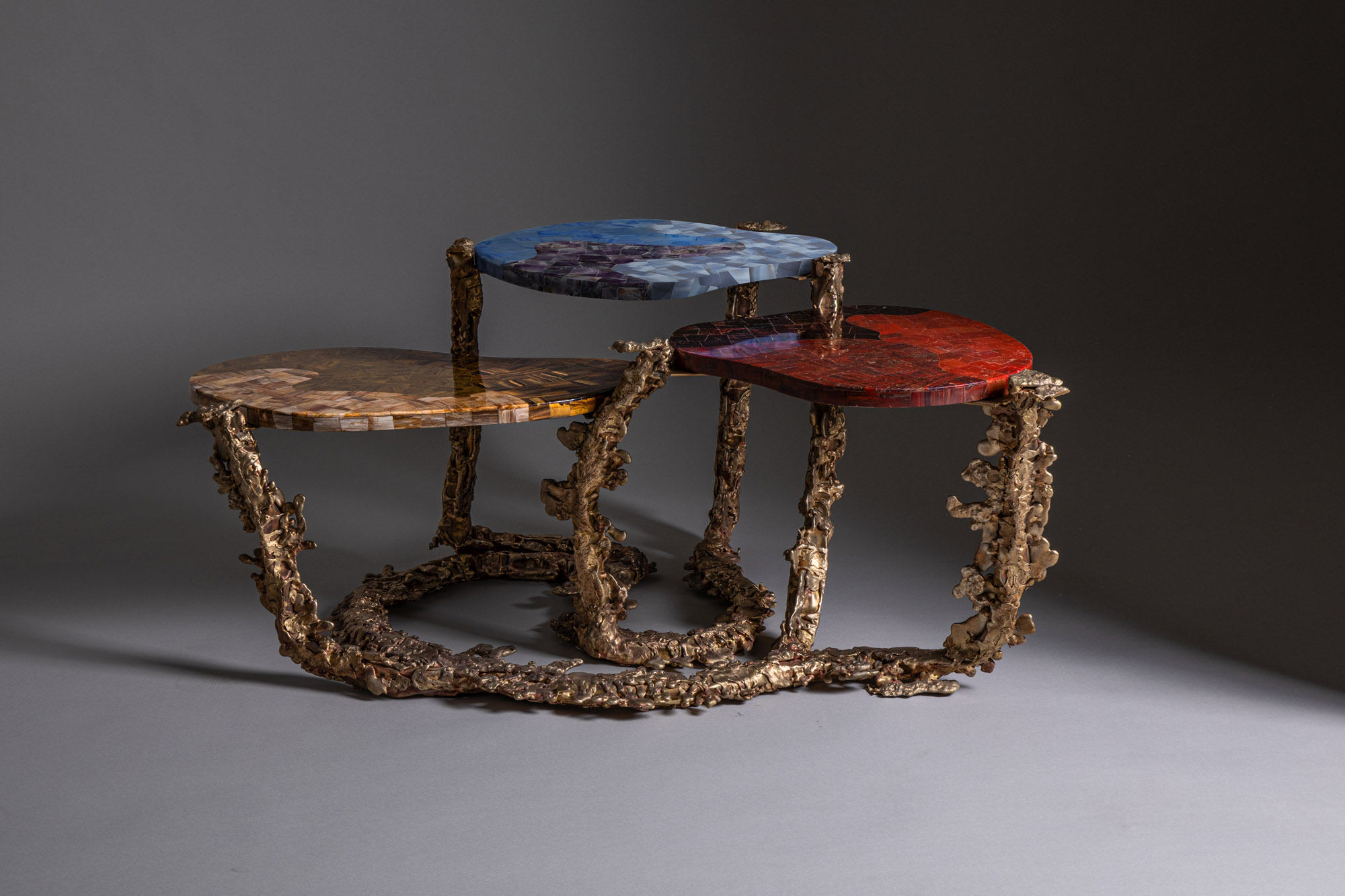 Inside the Shakti Design Residency, taking Indian craftsmanship to Alcova 2025
Inside the Shakti Design Residency, taking Indian craftsmanship to Alcova 2025The new initiative pairs emerging talents with some of India’s most prestigious ateliers, resulting in intricately crafted designs, as seen at Alcova 2025 in Milan
-
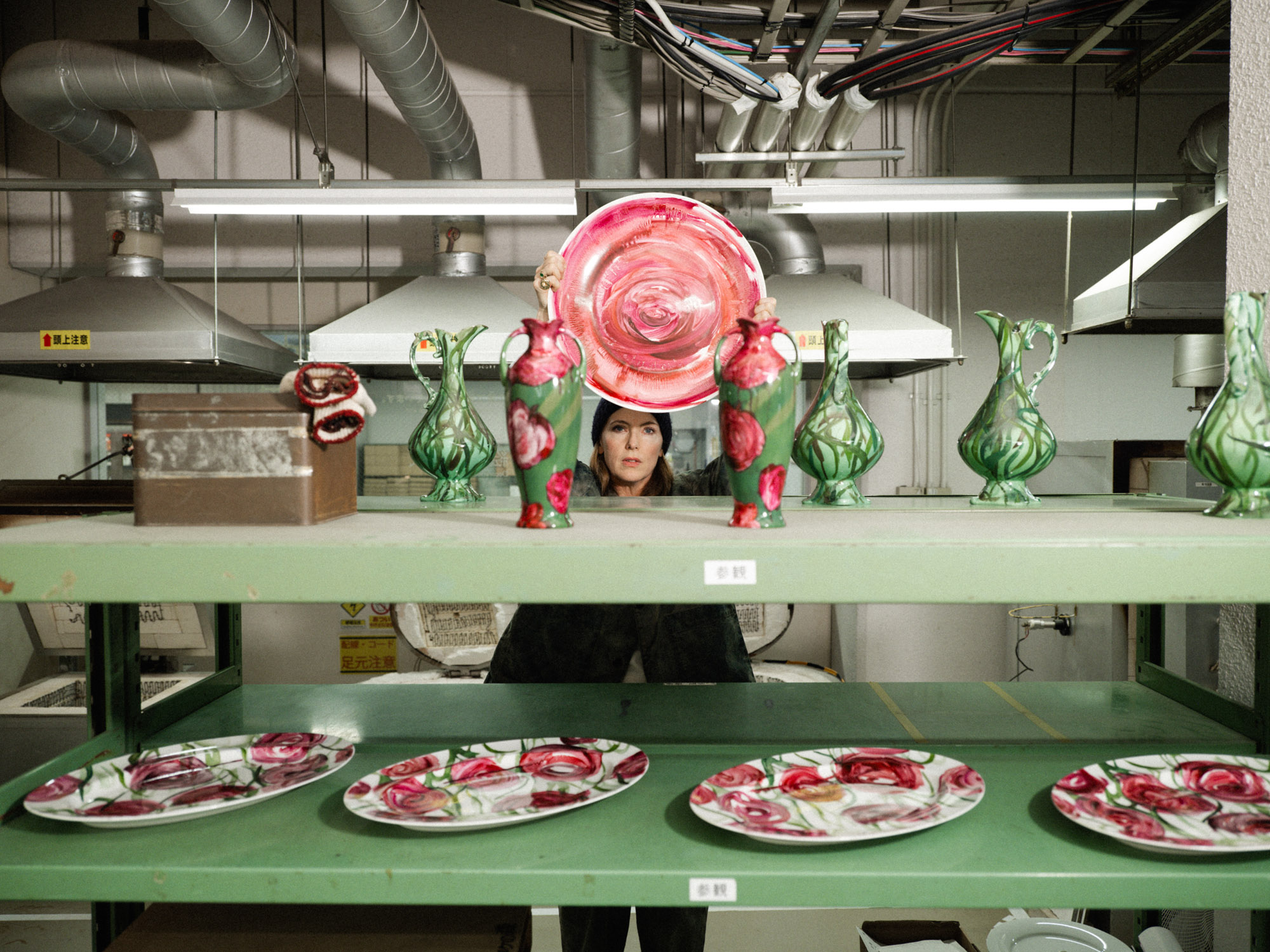 Faye Toogood comes up roses at Milan Design Week 2025
Faye Toogood comes up roses at Milan Design Week 2025Japanese ceramics specialist Noritake’s design collection blossoms with a bold floral series by Faye Toogood